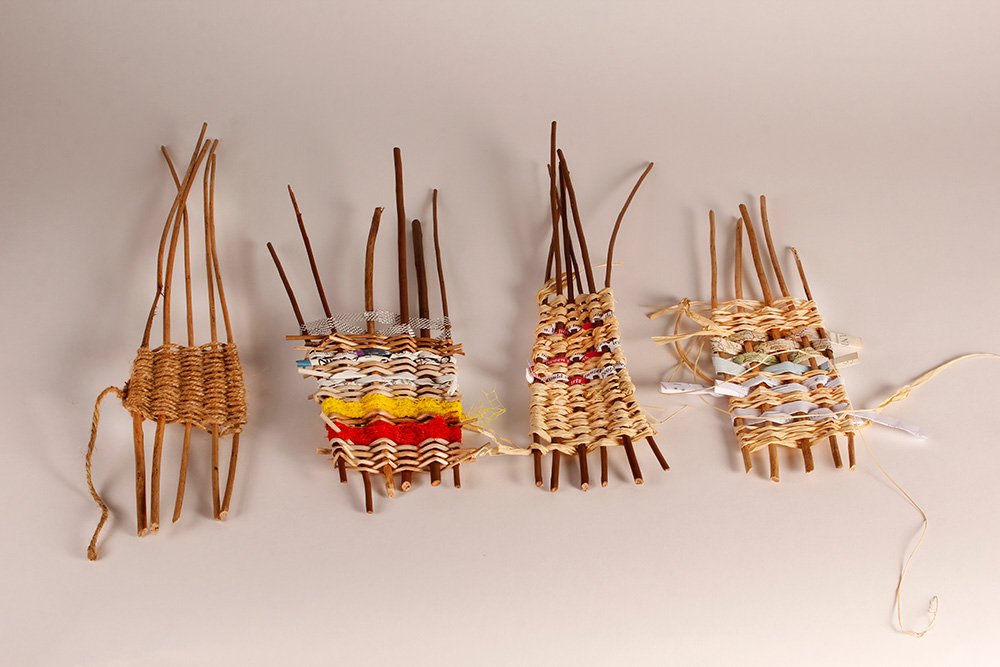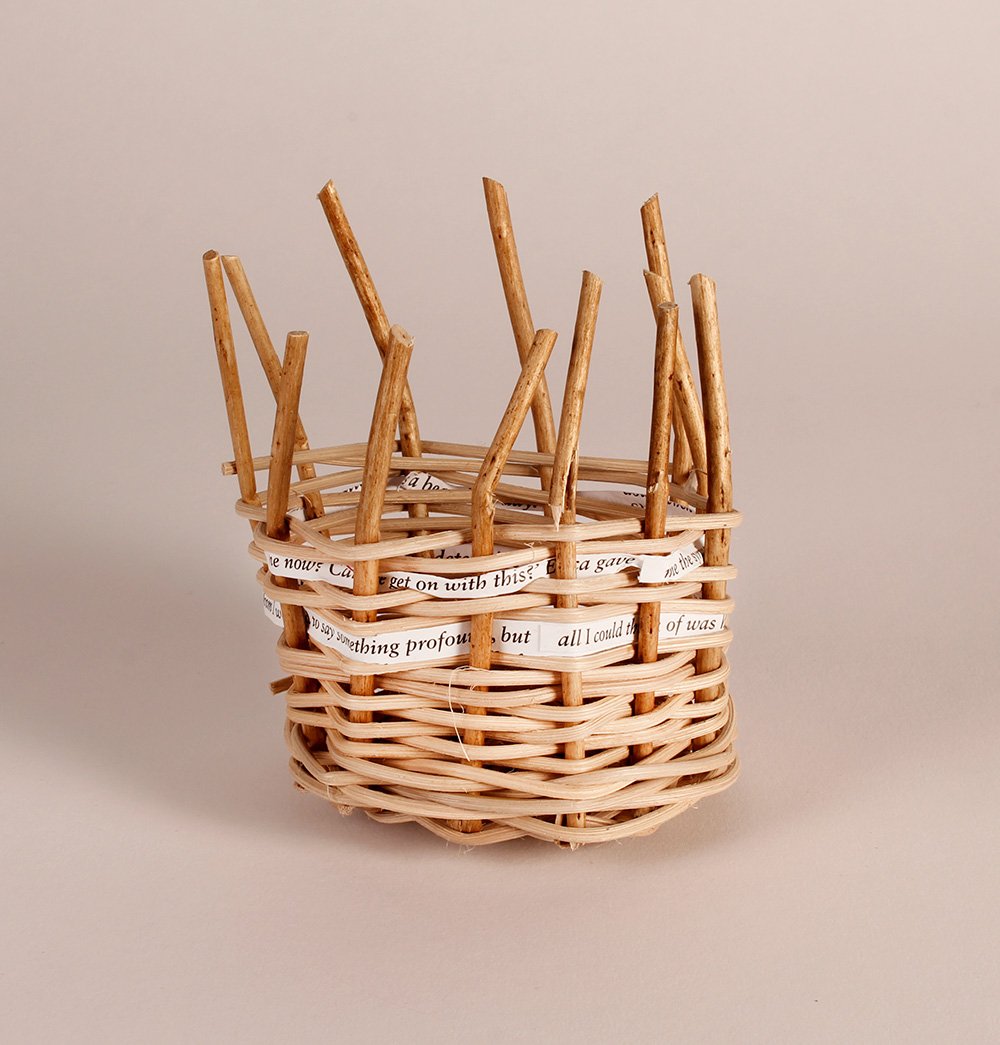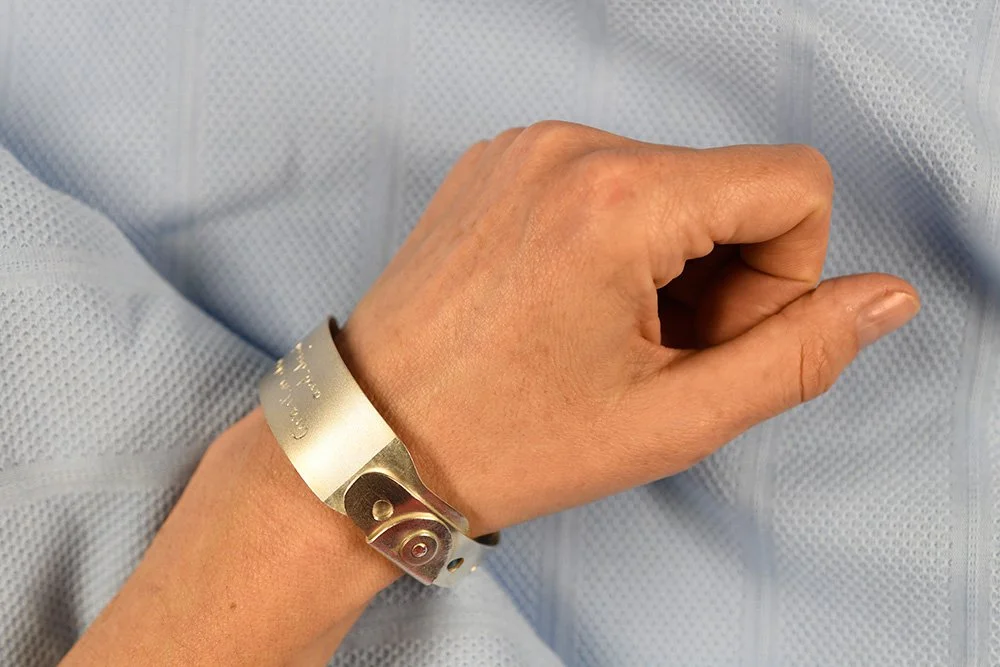Last Rights
The Spoken Urn
The experience of end of life in the modern world has left many dying people frightened of suffering and losing autonomy and dignity in the process. Medicine can vastly prolong life, but not always cure suffering. How do we deal with this new order? This project explored the issues from the patients’ perspective and sought to give a stronger voice to a group that feels very disempowered at the moment it matters. Patients, and those close to them, expressed a strong need to tell their personal experiences; to make their struggles known and to give a sense of permanence to them. Inspired by a willow coffin weaver I started to twist and bend forms and materials to make urns. There seemed something very organic and personal in the forms; each one as unique and individual as the story itself. Gradually the written word was introduced, and the stories told.

Samples - mixed media

Mixed fibres and paper

Willow, rattan and paper

The Spoken Urn - tracing and print

Print and tracing paper

Freeform paper urn
Grant me choice and dignity in my dying
The iconic white plastic hospital wristband; most of us are wearing one just minutes after our birth, and many of us die with one too. Nowadays the information they impart is often reduced to an anonymous barcode. The hospital wristband was chosen as a means of reclaiming this autonomy and control; a way of giving a voice back to the patient. For a protest which was being held outside the Houses of Parliament a whole batch of wristbands were stained in campaign colours for the protesters to wear. Simple messages were dyed on each one - often a single word which summed up their feelings. The silver bangle wristband was made as a piece of complimentary jewellery for the campaign leader who was introducing the issue in Parliament that same day. It was inscribed with the words “Grant me choice and dignity in my dying”.
Protest wristbands
Silver plated bangle "Grant me choice and dignity in my dying"



